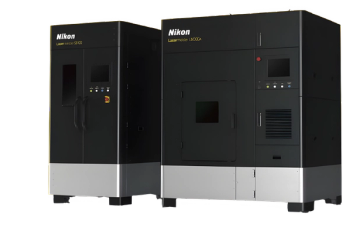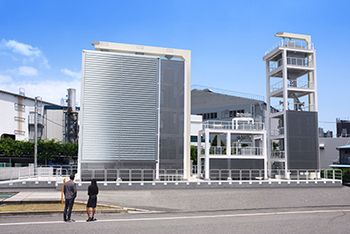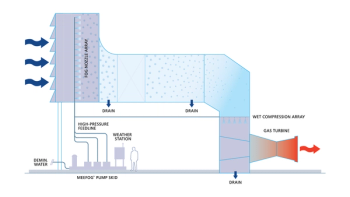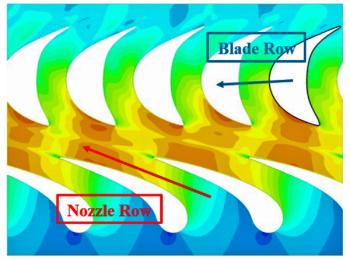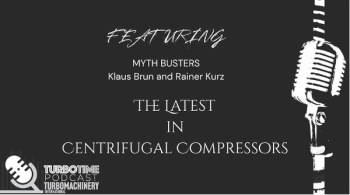
- May/June 2025
- Volume 66
- Issue 3
How Vibrations Affect a Turbomachine's Reliability and Operation
Vibration: How to deal with it and how to prevent operational problems and failures.
Vibration is a significant problem for turbomachinery, piping, and facilities. Left unchecked, it can lead to fatigue, cracks, and failures.
Modes and natural frequencies play a significant role in vibrations. Low-order modes/frequencies (first, second, and third modes) indicate when turbomachinery/equipment is most likely to vibrate and usually dominate all the higher-frequency modes.
The mode shape is how equipment (body or assembly) deforms and vibrates at a natural frequency. Mode shapes might involve bending, twisting, elongation and contraction, or a combination of these effects.
The first mode (mode of lowest frequency) is the fundamental mode. It is usually the most critical mode and the focus of the modal analysis and vibration study. This mode is often excited with a risky resonance. Higher-order modes, known as harmonics, are typically more complex than fundamental mode(s) and have more inflection points.
A key feature is the random distribution of modes in an arbitrary equipment or physical object. Modes of different shapes are located one after another. Some successive natural frequencies are closely located, while others are far apart. The modes’ pattern and distribution can significantly affect turbomachinery’s behavior under dynamic and vibrational loads.
Sometimes, modes are simple up-and-down, side-to-side, or front-to-back motions; however, there might be one or more harmonic vibrating modes between these simple modes. The shape may not necessarily become more complex for each successive mode, but the overall trend is for the mode shapes to become more complicated as the vibrating frequency increases.
Mass and stiffness are significant operational and mechanical considerations for turbomachinery and equipment exposed to dynamic loads. As an indication, the greater the mass of the equipment/assembly, the lower its vibrating natural frequency. Conversely, greater stiffness means higher vibrating natural frequency. Different factors, such as how the equipment is configured, mass distribution, stiffness distribution, constrained equipment, internal loads/ stresses, internal tensions in parts/elements, etc., influence the natural frequencies and mode shapes.
Ideally, resonance should not occur during regular operation. The modal analysis aims to identify and eliminate risky and problematic resonances. Preferably, the first mode should have a frequency higher than any potential excitation frequency. The first natural frequency should be far higher than the excitation frequencies. Alternatively, the excitation frequencies, which are often one time and two times the turbomachinery operating speeds, may be located above the first natural frequency. In this case, the turbomachinery (or equipment) should withstand the momentary resonance that occurs while the rotating shaft/rotor accelerates to the operating speed.
ANALYTICAL MODELS AND INACCURACIES
Analytical dynamic models require careful attention to accurately reflect the actual turbomachinery (or equipment) during operation. Oversimplifications lead to inaccurate analysis, missed resonances, high vibration, and operational problems.
There have been many closely coupled modes in different turbomachinery and equipment. Closely coupled modes usually occur in nonlinear and axisymmetric equipment. Refinements on analytical models would result in closely coupled modes instead of a single mode produced using an inaccurate model; in other words, a single mode might be split into two closely coupled modes due to refinements and improvements. Therefore, a refined analytical model may produce more modes and natural frequencies, some close together.
STIFF MODELS VS REAL TURBOMACHINERY
In many analytical models, theoretical natural frequencies are higher (stiffer) than the measured/actual natural frequencies, while masses are reasonably accurate. In many cases, each refinement in the analytical model/ simulation would bring the calculated natural frequencies closer to the exact/measured natural frequencies. However, there might be situations where a refinement adds one or a few modes or even slightly higher frequencies.
Generally, there are more differences between theoretical and actual modes for the higher modes, and, too often, inaccuracies in analytical models’ stiffness and mass distribution show themselves as discrepancies at higher modes. This mismatch and discrepancy at high-order modes is widely reported. This should not be a significant issue because there is less risk of resonance in higher-order modes compared to low-order modes.
PRACTICAL CHALLENGES OF REAL-WORLD TURBOMACHINERY
Endless variations of modal analysis are required to meet differences due to operational variables and other possible changes, such as actual tolerances/differences in fabrication and minor modifications in packaging. Regarding vibration issues, part quality has a substantial effect, which engineers and experts have difficulty quantifying. One of the reasons to use simple configuration for turbomachinery/equipment and simple component design is for better and more predictable vibration/modal behavior. Typically, finish-machined parts are more predictable (and manageable) than cast parts. Generally, gear units, gearboxes, and gears have been a major challenge for vibrational/ modal analysis.
Ideally, turbomachinery’s natural frequencies should be located well beyond standard excitation frequencies, or the complicated matters of tolerances, variations, part quality, operation effects, etc., come into play, adding complexities to the dynamic/ vibrational evaluations.
About the Author
Amin Almasi is a Chartered Professional Engineer in Australia and the U.K. He is a senior consultant specializing in rotating equipment, condition monitoring, and reliability.
Articles in this issue
6 months ago
Myth: We Need That Last Percent7 months ago
Turbomachinery International: May/June 2025Newsletter
Power your knowledge with the latest in turbine technology, engineering advances, and energy solutions—subscribe to Turbomachinery International today.

